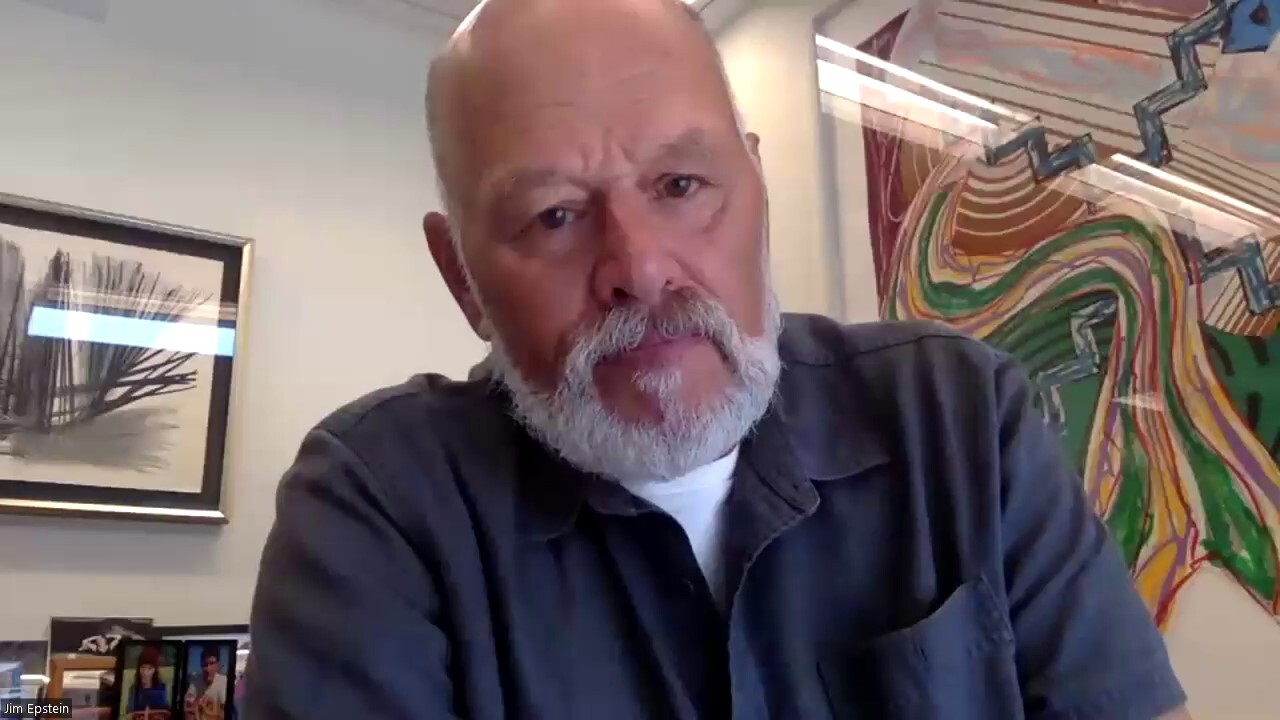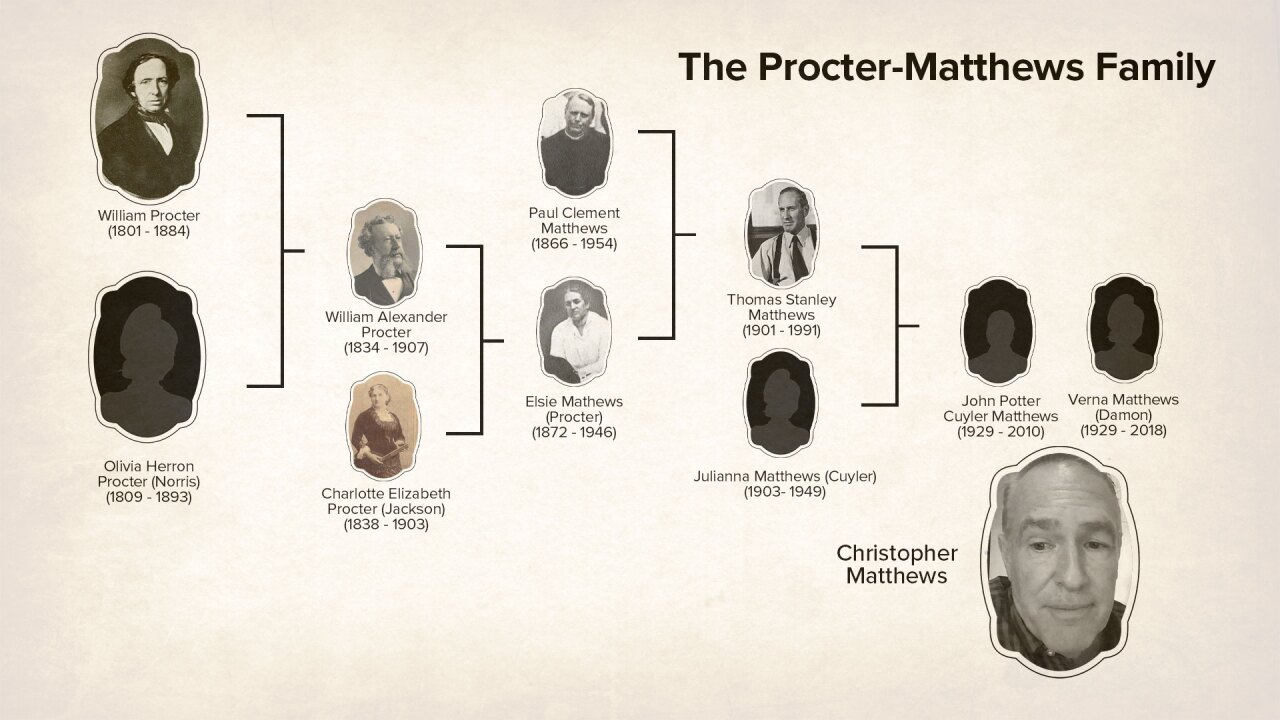CINCINNATI — When a group of Procter & Gamble Co. heirs visited Cincinnati last October, they advanced a generational quest that could reshape P&G’s role as an environmental steward - and redefine the role their ancestors played in abolishing slavery.
Both outcomes are far from certain at this point. But the quest itself is a fascinating tale that sheds new light on the most consequential business partnership in Cincinnati’s history. In 1837, soap-maker James Gamble joined forces with his brother-in-law, candle maker William Procter, to create one of the world’s most successful consumer product companies.
Historians have yet to link P&G’s founders to the pre-Civil War movement to end slavery. But it turns out there is circumstantial evidence that connects the Procter family to John Van Zandt, a Glendale farmer jailed for transporting fugitive slaves in 1842.
“I would say the Procters outdid the Gambles in that regard,” said Jim Epstein, a fifth-generation descendant of James Gamble. “There’s probably a lot of details to that history that we don’t yet know but I’m very interested in knowing more.”

Epstein visited Van Zandt’s former farm when he came to Cincinnati for P&G’s annual shareholders meeting last October. He sees a direct link between the hidden history of P&G’s founders and environmental issues facing the company today.
“Our disappointment with them is that they are not taking the leadership role in the most critical issue of our day, which is trying to address climate change,” said Epstein, one of about 100 P&G descendants who’ve signed letters calling on the company to protect the world’s forests.
In the last decade, P&G has faced increasing criticism for its use of virgin wood pulp in toilet paper and tissue products, while continuing to use palm oil in shampoo and detergents. The pulp industry has been linked to the degradation of boreal forests in Canada, while rainforests have been cut down for palm oil plantations in Indonesia. Because forests store large amounts of carbon, scientists say their demise accelerates climate change.
“P&G requires our suppliers to commit to no deforestation, as outlined in our published Forest Commodities Policy to respect human rights, and to protect biodiversity,” said Tonia Elrod, vice president for P&G Family Care. “We have rigorous compliance mechanisms in place and extensive auditing and monitoring of our wood fiber supply chain.”
But those efforts aren’t enough to satisfy environmental activists, including Epstein’s 31-year-old daughter, Justine.
“I have a role to play in these times,” Justine Epstein said. “Direct action is critical. Shareholder organizing is critical.”

The effort began with a 2020 letter to P&G’s former CEO David Taylor. It continues with the efforts of about a dozen family members who meet regularly to plot their next steps.
“We call it the inside out strategy,” said Chris Matthews, a fifth-generation descendant of William Procter. He views the family as the “conscience of the company.” It holds a unique position to apply inside pressure on company executives while encouraging outside pressure from environmental activists and shareholder advocates.
“We are viewed by them probably as a bit of a pain and that’s good for us,” Matthews said. “I mean, we want to be a bit of a pain in a polite, collegial way.”

What the family wants
The WCPO 9 I-Team spent several weeks researching the issues raised by P&G descendants.
P&G provides voluminous details on the sourcing of forestry products on its investor website.
Among the most recent disclosures:
- P&G consumed 1.54 million metric tons of wood pulp in the 12 months ending last June. That’s up 2% from the prior year but down 9% from 2020.
- P&G used 504,345 metric tons of palm oil in the 12 months ending last June. That’s down 16.6% from the prior year and down 2.7% from 2020.
- P&G uses third parties to certify that its pulp and palm oil are sustainably sourced. It says 100% of the palm oil used in its brands are certified by the Roundtable on Sustainable Palm Oil while 100% of its pulp meets other standards. That includes 69% certification by the Forest Stewardship Council.
- Beyond third-party certification, P&G says it monitors suppliers with “field assessments, satellite monitoring, deskside audits, risk management software platforms and supplier sustainability meetings.”
The Epsteins and Matthews are P&G shareholders who declined to reveal how much stock they own.
They represent interesting branches of a family tree that includes a former Supreme Court Justice and Time magazine editor on the Matthews side. The Epstein branch includes the founder of Pathfinder International, a global advocate of birth control and reproductive health initiatives.
Their interest in P&G's environmental policies dates back to the late 1990s, when Jim Epstein got 87 P&G heirs to sign a letter asking the company to endorse the Coalition of Environmentally Responsible Economies. In 2020, Justine Epstein collected 96 family signatures for a letter outlining several deforestation demands.
“We urge you to fully account for and commit to cutting in half the carbon footprint associated with your sourcing from forests and eliminate deforestation and intact forest degradation from your supply chains,” said the letter. “We also urge you to avoid sourcing from the habitat of threatened and endangered species. And finally, we urge you to adopt requirements that your suppliers secure free, prior and informed consent when operating on Indigenous and traditional communities’ lands.”
‘We’ve not seen evidence’ of change
The letter coincided with a shareholder resolution by Green Century Capital Management, calling on P&G to “eliminate deforestation and forest degradation in its supply chain.” The measure passed with 67% shareholder support. At the time, it was the highest tally ever for a deforestation proposal. But it didn’t spark enough change to satisfy P&G descendants.
“While they’ve updated the language in their policy following that resolution, we’ve not seen evidence that they’ve actually changed their practices in significant ways to mitigate impacts on climate destruction,” Justine Epstein said.
In 2021, Green Century proposed another shareholder resolution that called on P&G to eliminate sourcing from intact forests. But it withdrew the request after P&G made “made a commitment to develop a stronger supplier non-compliance policy for its wood pulp supply chain and to clarify its policy on Free, Prior, and Informed Consent (FPIC).”
Boston-based Green Century is a nonprofit operator of socially responsible mutual funds that tries to influence corporate behavior with shareholder resolutions and investment decisions.
“We got as much out of P&G as we could,” said Leslie Samuelrich, Green Century president. “We were pleased enough with their progress to let them proceed for a year or two and see what else they would do.”
While she met with P&G descendants, Samuelrich said they didn’t play a role in shaping its approach to shareholder resolutions at P&G.
“The tricky thing is, there’s a lot of P&G descendants,” Samuelrich said. “It’s not like the entire family is mobilized on it.”
‘It’s a long, long road’
The Natural Resources Defense Council has also met with P&G descendants while pursuing a pair of campaigns criticizing P&G for not offering a recycled tissue product and asking the U.S. Securities and Exchange Commission to sanction the company for “greenwashing,” or misleading investors about its deforestation policies. P&G and the SEC declined to comment on NRDC’s complaint.
“The family has been incredibly powerful over the last few years, simply by shining a spotlight on the issues and problems that P&G is linked to. It’s helped to raise the profile of our work,” said Shelley Vinyard, manager of the boreal corporate campaign for NRDC. “As investors and as descendants, they have weight within the company, and they’ve helped to bring the issue to the most senior executives at the company as well.”
And that could be the family’s biggest accomplishment in its generational quest to change the company’s approach to deforestation. During their Cincinnati visit last October, they had a 40-minute meeting with CEO Jon Moeller and other top executives.
“It was deep listening and I think they really wanted to hear what our concerns were,” Jim Epstein said. “They, in turn were very forthright about the challenges that they have, with the supply chain issues at the scale that they operate at.”

Matthews said Moeller explained why P&G has yet to launch a recycled tissue product.
“At the time, they had bamboo toilet paper, right? Charmin bamboo,” Matthews recalled. “Moeller said, ‘If I bought all the bamboo in the world right now, they would last a month at our numbers, maybe two. There’s just not enough bamboo out there.’”
P&G said it uses recycled fibers to make the cardboard cores of its toilet paper roles but questions whether consumers will buy the thin sheets of tissue that recycled pulp creates.
“Recycled and non-wood fiber tissue products are less than 1.5% of US market share, which is an indication of consumer demand,” Elrod said.
P&G’s sustainability team has continued to meet with family members, who plan a return trip to Cincinnati for P&G’s annual shareholder meeting in October.
“We know it’s a long, long road,” Matthews said. “We will be their conscience. We will affect change where we can.”

‘Conscience of the Company’ is a three-part series that explores how the descendants of Procter & Gamble’s founders are trying to influence the company today. Tomorrow, we’ll explain why P&G descendants don't think the company doing enough to protect the world’s forests. Part three will answer the question: Were P&G’s founders abolitionists?







